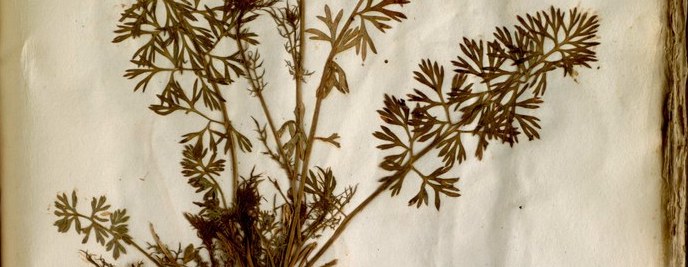—How the obsession of a collector contributed to the creation of network for the exchange and circulation of scientific knowledge on nature and its productions.—
Ulisse Aldrovandi was one of the best-known naturalists of the second half of the sixteenth century, mainly due to his immense activity as a collector. Over almost sixty years of tireless work, his Museum (he himself used this term to refer to his cabinet) was filled not only with specimens from the three kingdoms of nature (animal, plant and mineral), but also with drawings, engravings, paintings, etching plates, pressed dried plants, manuscripts and thousands of letters, which he exchanged – accompanied by objects for the respective collections – with other European naturalists.
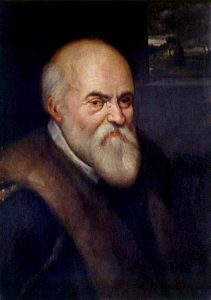
Ulisse Aldrovandi portrayed by Agostino Caracci around 1600. Wikipedia.
The breadth and dimensions of Aldrovandi’s collection is, in fact, inconceivable without his constancy in maintaining correspondence with molti amici in varii luoghi (‘many friends in different places’) as he himself acknowledged in his writings. It was through this correspondence that Aldrovandi built his fame as an excellent connoisseur of nature, insightful observer and careful collector of plants, animals and minerals. A fame that he achieved almost without needing to publish almost any books, but thanks to his collection and an excellent strategy to publicise it. Aldrovandi achieved this goal mainly through the creation of a network of correspondents, sustained by the tireless work of writing countless letters, through which he proposed and obtained exchanges of specimens, paintings, seeds and any information related to the scientific developments that were reported by transoceanic voyages and explorations on land.
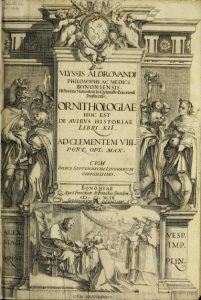
Title page of the Bologna edition, 1602, of Aldrovandi’s work on birds, Ornithologiae libri XII. Internet Archive.
It was, therefore, his collection and its circulation through epistolary correspondence that not only built Aldrovandi’s scientific prestige, but also an international community of ‘those curious about nature’, committed to scientific study. In fact, Aldrovandi’s printed work is late and, for the most part, posthumous, carried out by his disciples with various publishers, often showing disrespect to the original texts of the Bolognese master. Of the numerous volumes published under his name, the twelve books on birds (Ornithologiae libri XII) published in Bologna in 1590 can be considered his most important printed work. He was also able to publish his treatise on insects (De animalibus insectis) in 1602. The rest of his printed production saw the light of day after his death. Born in 1522, in Bologna, an Italian city-state that was part of the territorial domains of the Papacy, Aldrovandi had a hectic youth, which included several trips to Rome, a pilgrimage to Santiago de Compostela, an unsuccessful pilgrimage to the Holy Land and an accusation of heresy that took him to Rome as a prisoner, although later, thanks to family influences, the charges were dropped. Whether or not his religious heterodoxy went further, the truth is that his network of correspondents included Catholics, Lutherans, Calvinists and other Christian denominations, transcending the confessional boundaries of a Europe once dominated by the military conflicts arising from the rupture of Western Christianity.
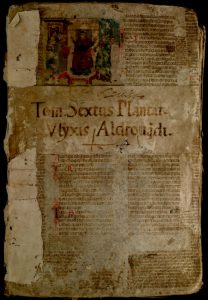
Cover of the sixth volume of the Aldrovandi herbarium (Tomus Sextus Plantarum Ulyxis Aldrovandi). Università di Bologna.
During his forced stay in Rome, the young Aldrovandi met Guillaume Rondelet (1507-1566), who was there as Cardinal Tournon’s physician. Rondelet was the one who initiated Aldrovandi in the study of nature, especially of animals, since the Frenchman was then preparing his treatise on marine fauna, which he would publish in Lyon in 1554 (De piscibus marinis libri XVIII). Thus, Aldrovandi began by collecting fish and learning the various techniques for their conservation, observation and description. His works included anatomical dissection, the extraction of various organs to preserve them in various mediums and the drawing of the collected and dissected specimens. He also incorporated knowledge coming directly from fishermen, sailors and artisans related to the world of aquatic flora and fauna. Shortly after this initiation as a naturalist, around 1549, Aldrovandi established a relationship with Luca Ghini, professor of semplici medicinali (that is, the elements of nature, mainly plants, considered to be of medicinal use) at the University of Pisa.
Thanks to Ghini, Aldrovandi learned the technique for the production of the herbarium, a method of plant conservation that consisted in pressing, drying and glueing the botanical specimens collected in the field, during botany collecting trips, on a sheet of paper. The herbarium technique was new in the practical work of naturalists, herbalists, doctors and apothecaries at that time; since then, it has been carried out in systematic botany as an excellent method of plant conservation, permitting their description, identification and exchange. At the end of his life, Aldrovandi’s herbarium was made up of several hundred sheets and was one of the most extensive and well-known in Europe, thanks to, among other things, the constant exchange of letters.
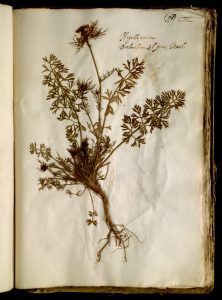
Specimen of Nigellia damascena L. on a sheet from the Aldrovandi herbarium. Università di Bologna.
In 1553, Aldrovandi received his doctorate in philosophy and medicine from the university of his hometown. In the following year, he became a professor of logic, in the next year he was appointed chair of philosophy and, from 1556-57, he took on the role of teaching de simplicibus medicinalibus, shared with the physician Cesare Odoni until 1571, and then alone, until his retirement in 1600. This teaching activity was directly related to the creation of the Giardino dei semplici (botanical garden) at the University of Bologna in 1568, of which Aldrovandi was head for more than thirty years. Although this was not the first of the university botanical gardens, which had appeared a couple of decades earlier, also in central Italy (Pisa, Padua, Florence and Ferrara), the one in Bologna is paradigmatic of these spaces of scientific practice in the area of the medical faculties. In fact, the essential focus by which the first botanical gardens were created was to link them to university teaching of the subject of medicine, that is, of the therapeutic repertoire that Hippocratic-Galenic medicine had been creating over the centuries. A similar, though more restrictive, role than that which was played by the various private botanical gardens, often inseparable from naturalist collectors and their cabinets of curiosities.
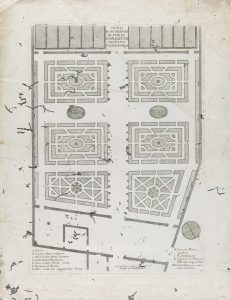
There are no images of the Orto botanico of Bologna in Aldrovandi’s time. This one, from the work of Gaetano Monti (1753), is one of the oldest known. OBJ Digital.
This is how, despite his hectic youthful life and once settled in Bologna and in his respectable university position, Aldrovandi became the prototype of a cabinet naturalist. Although around 1569 he developed a plan to offer his services to Philip II to organise a scientific expedition to the West Indies, the truth is that Aldrovandi’s journeys never took him very far, since they were limited to some collection trips around Bologna and the nearby regions. His museum was, therefore, the space where he developed his experimental, observational and descriptive work; and his extraordinary collection was the driving force of his work, in addition to the foundation of his fame among the naturalist community throughout Europe.
Upon his death in 1605, Aldrovandi handed over his Museum, herbarium, library and manuscripts to the Senate of Bologna, so that – despite various ups and downs – they have always remained available to scholars. Despite this, and given the volume of documentation preserved, today, more than four hundred years after his death, they have not yet been studied in their entirety.
José Pardo Tomás
IMF-CSIC
How to cite this paper:
Pardo Tomás, José. Ulisse Aldrovandi, collector. Sabers en acció, 2020-12-02. https://sabersenaccio.iec.cat/en/ulisse-aldrovandi-collector/.
Find out more
You can find further information with the bibliography and available resources.
Recommended reading
Olmi, Giuseppe. Ulisse Aldrovandi: Scienza e natura nel secondo cinquecento. Bologna: Cooperative University Library; 1976.
Simili, Rafaella, ed. Il teatro della natura di Ulisse Aldrovandi. Bologna: Compositori Editrice; 2001.
Studies
Bacchi, Maria Cristina. Ulisse Aldrovandi e i suoi libri. The Archiginnasio. 2005; 100: 255-366.
Findlen, Paula. The Formation of a Scientific Community: Natural History in Sixteenth-Century Italy. In: Grafton, Anthony; Siraisi, Nancy, eds. Natural Particulars. Nature and the Disciplines in Renaissance Europe. Cambridge: The MIT Press; 1999, p. 369-400.
Kraemer, Fabian. Ulisse Aldrovandi’s Pandechion Epistemonicon and the Use of Paper Technology in Renaissance Natural History. Early Science and Medicine. 2014; 19 (5): 398-423.
Olmi, Giuseppe. Molti amici in varii luoghi’: studio della natura e rapporti epistolari nel secolo XVI. Nuncius. 1991; 6 (1): 3-31.
Olmi, Giuseppe; Trabucco, Oreste. I nuovi mondi da Aldrovandi ai Lincei: viaggi reali e viaggi nello studio. In: Il viaggio. Mito e scienza, catalogo della mostra. Bologna: 2007, p. 149-167.
Pugliano, Valentina. Ulisse Aldrovandi’s Color Sensibility: Natural History, Language and the Lay Color Practices of Renaissance Virtuosi. Early Science and Medicine. 2015; 20 (4-6): 358-396.
Sallent del Colombo, Emma. Natural History Illustration between Bologna and Valencia: The Aldrovandi–Pomar Case. Early Science and Medicine. 2016; 21 (2-3): 182-213.
Sources
Aldrovandi, Ulysses. Natura picta, ed. A. Alessandrini; A. Ceregato. Bologna: Composers; 2007.
Tossi, Alessandro, ed. Ulisse Aldrovandi e la Toscana. Carteggio e testimonianze documentarie. Florence: Leo S. Olschki; 1989.
Tugnoli Pàttaro, Sandra, ed. Osservazione di cose straordinarie: Il De observatione foetus in ovis (1564) di Ulisse Aldrovandi, Bologna: Cooperativa Libraria Universitaria; 2000.
Websites and other resources
The manuscripts, letters, herbarium and other objects of the Aldrovandian museum are now kept in the Biblioteca dell’Archiginnasio (available here), the scientific collections of the University, exhibited in the Palazzo Poggi (available here).
The digitalised Aldrovandi herbarium can be seen and consulted here.
On the occasion of the centenary of Aldrovandi’s death in 2005, the University of Bologna created an exhibition that was then transformed into a permanent website, under the title Teatro della natura (available here).
His printed works and some of his manuscripts can be found online here and here.

